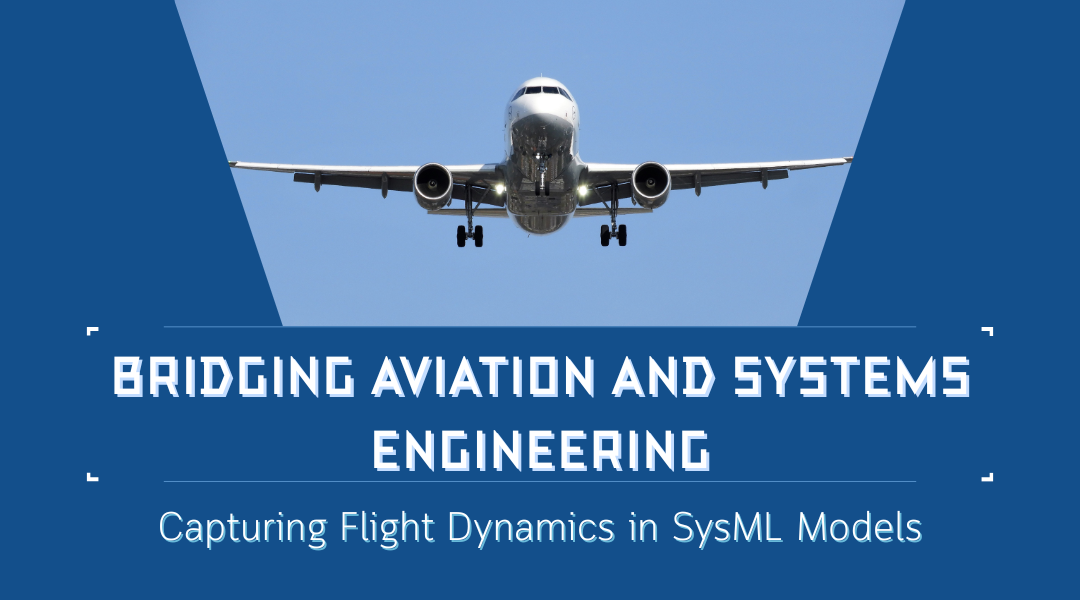Imagine you’re an aerospace engineer reviewing a new flight control system. The pilot’s yoke moves left—how do you prove the aircraft will roll precisely 15 degrees, not 14 or 16? This isn’t theoretical; lives depend on tracing every requirement to its implementation. Here’s how SysML brings rigor to this process.
1. Starting with Non-Negotiables
Flight control systems begin with irreducible requirements—the “must-haves” that keep planes airborne:
- REQ-101 (Stability)
“Maintain level flight when no input is given, even in turbulence.” - REQ-102 (Responsiveness)
“Respond to control inputs within 150ms—faster than human reaction time.” - REQ-103 (Fail-Safe)
“If primary systems fail, switch to backup controls without perceptible lag.”
Why this matters: These aren’t arbitrary. REQ-103 stems from FAA Part 25.1309—regulators will demand proof.
2. Breaking Down Complexity: The “Derive” Workflow
High-level requirements are useless to engineers. Derive relationships dissect them into actionable specs:
Parent Requirement:
“Control pitch during takeoff”
Derived Children:
- “At 80 knots, elevator deflects 8° upward”
- *”Pitch rate shall not exceed 4°/second to prevent tail strikes”*
- “Override pilot input if angle-of-attack exceeds safe limits”
Real-world impact:
Boeing’s 787 Dreamliner team used this approach to decompose “Automatic gust suppression” into 200+ sub-requirements for wing flex sensors and actuator response curves.
3. Linking Requirements to Hardware/Software
Enter the Satisfy relationship—the bridge between “what” and “how”:
| Requirement | Satisfied By |
| “Deflect ailerons ±25°” | Hydraulic Actuator Assembly (Block) |
| “Limit roll rate” | Flight Computer (Software Constraint) |
Tool trick: In Cameo Systems Modeler, right-click any requirement → “Show Satisfying Elements” to instantly see:
- Which CAD model implements it
- Which software module enforces it
- Which test validates it
4. The Hidden Hero: Non-Functional Requirements
While engineers obsess over control surfaces, these silent killers make or break systems:
- REQ-204 (EMI Resistance)
*”Operate normally when hit with 20V/m radio interference”*
(Satisfied by: Shielding in wiring harnesses) - REQ-205 (Cold Weather)
*”Function after 8 hours at -65°C (Antarctic cargo flights)”*
(Satisfied by: Gel-heated servo motors)
Aviation nightmare scenario: An Airbus A400M propeller gearbox failed certification because its “vibration damping” requirement wasn’t properly traced to the oil pump’s feedback loop.
5. Verification: Where Theory Meets Reality
Every requirement needs a provable test:
| Requirement | Verification Method |
| *”Autoland in 40-knot crosswinds”* | Hardware-in-loop simulation with actual wind tunnel data |
| “No single point of failure” | Fault injection testing (e.g., randomly killing processes) |
Pro tip: Use SysML’s «verify» relationship to link tests directly to requirements. Missing a verification? The model flags it in red.
6. Traceability in Action: The Full Picture
A well-modeled flight control system shows end-to-end lineage:
FAA Regulation 25.671
↓ (derives)
REQ-103: “Failover within 300ms”
↓ (satisfied by)
[Block: Redundant_Data_Bus]
↓ (verified by)
TEST-47: Power-cut during climb
This isn’t bureaucracy—it’s how you:
- Pass FAA/EASA audits
- Fix bugs faster (trace a flaw to its requirement in 2 clicks)
- Reuse components for new aircraft (knowing exactly what each part guarantees)
Lessons from the Field
- Beware “shall” overload:
Early 777 programs had 10,000+ requirements—many redundant. SysML models revealed 22% could be merged. - Animate your diagrams:
Tools like Ansys SCADE can simulate requirement flows—watch how sensor failures propagate through the system. - Track changes like Git:
When a requirement evolves (e.g., “200ms latency” → “150ms”), the model highlights all affected tests and components.
Final Thought
Modeling flight controls in SysML isn’t about drawing boxes—it’s about engineering accountability. Every line in your diagram answers three questions:
- “What must this system do?”
- “How do we make it happen?”
- “How do we know it works?”
Try this today: Open your project’s most complex requirement. Can you:
- Name the derived sub-requirements?
- Point to the satisfying component?
- Show its test procedure?
